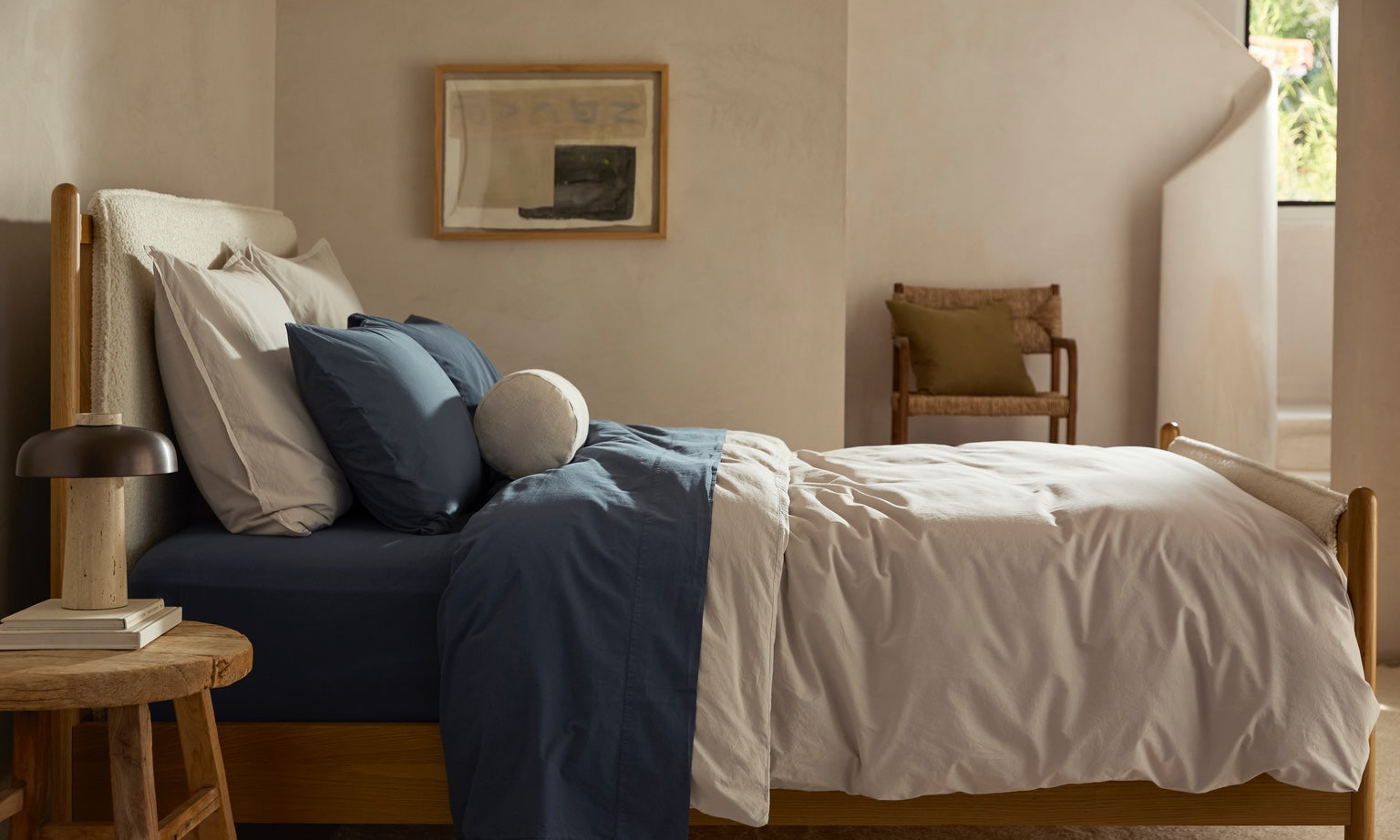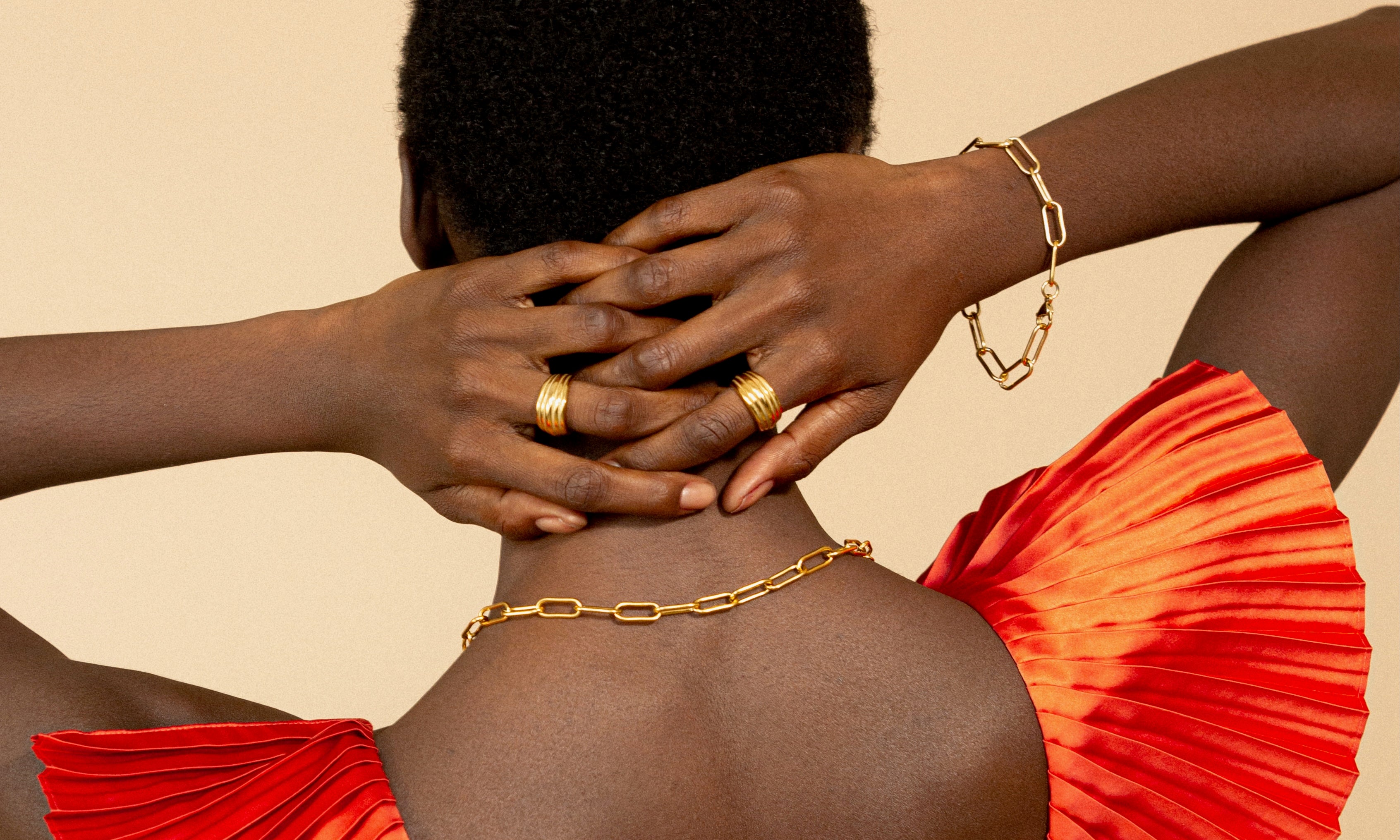
What Is a Comforter? The Essential Bed Cover
What is a comforter, and why do you need one? Read our blog for answers to these questions and tips on what to look for when purchasing this bedding essential.
High-quality sleep begins with the right bedding. Besides a supportive mattress and a pillow that fits your sleeping style, the right bedspread is crucial. Comforters are a top choice — but what is a comforter, exactly?
We’ll answer this question, then we’ll dive into the difference between a duvet versus a comforter, discuss why you need a duvet cover and offer tips for buying a bed cover you’ll love to come home to.
What Is a Comforter?
A comforter is a popular type of bedspread. The thick, box-quilted cover is composed of a smooth fabric shell and a soft, fluffy, insulating fill. Comforters can feature a solid color or decorative printed design, but they're typically plain white and meant to go inside a washable duvet cover.
What Are Comforters Made Of?
Comforters are made of multiple materials. The outer shell is usually cotton or another soft, breathable fabric. Inside the box-quilted exterior is some sort of light, lofty, insulating fill fibers, which might be down, feathers, poly fibers, silk, wool, cotton or a combination of materials.
Not all comforters are created equal. Some are much cozier, more temperature-regulating or otherwise comfier than others. With this in mind, the materials used to make your bed cover are crucial.
What Is a Down Comforter?A down comforter is a quilted duvet insert filled with natural down fibers sourced from the undercoats of geese or ducks. The material differs from feathers (though the two are sometimes mixed to create a down-feather fill blend) and is notably lightweight, ultra-fine and without poking quills.
What Is a Down-Alternative Comforter?A down-alternative comforter is a quilted duvet insert filled with an animal-free material that mimics real down's lightweight, lofty qualities. The fill could be microfiber (poly fibers) or cotton. Silk is an alternative to down, but it's not vegan, as it's sourced from mulberry worms.
Comforter Shell
The comforter shell is the outer fabric layer. In addition to being soft and smooth, the fabric should be breathable and moisture-wicking to prevent heat from getting trapped and to draw sweat away from your body while you sleep. For these reasons, cotton or another natural material is ideal.
Comforter Fill
The comforter's fill should provide insulating warmth while also helping regulate your body temperature to prevent you from overheating at night. Natural down checks all the boxes, though some people prefer a vegan-friendly and hypoallergenic down-alternative fill.
See our Down vs. Down-Alternative Comparison Guide for more details.
What's the Difference Between a Comforter vs. Duvet?
What is the difference between a duvet vs. a comforter? A comforter is very similar to a duvet, meaning both are fluffy, quilted bed covers. The terms are often used interchangeably in the United States, but they're technically different.
By definition, a duvet is a soft, quilted type of bedding insert, filled with lightweight fibers, and meant to go inside a duvet cover. On the other hand, you can use some comforters without a cover.
As noted, certain comforters are made to be presentable as-is, in which case they might feature a color or a decorative print. Without a cover, you'll generally want to launder your comforter as often as you clean your sheets. But if yours is plain white, you can assume it's meant to go inside a machine-washable duvet cover.
How Is a Comforter Similar to a Duvet?Both comforters and duvets are thick, fluffy bed covers with box quilting. Both feature soft fabric shells and some sort of fill material. Some are filled with down feathers, wool or silk. They can also be filled with synthetic fibers such as down-alternative microfiber.
What is a duvet comforter?
A duvet comforter isn't really a thing. As mentioned, people often use the words duvet and comforter interchangeably.
What size is a king comforter, and what size is a queen comforter? See our blogs, King Size Sheet and Mattress Sizes and Queen Size Blanket Dimensions for answers.
What Is a Duvet Cover?A duvet cover is a washable fabric enclosure that goes over a duvet insert. Sometimes called a comforter cover, it's meant to protect the insert from sweat, dirt, spills, body oil and other residues. Duvet covers can be made from various textiles, like linen, sateen, percale and organic cotton.
How to Wash a Comforter
Down and down-alternative comforters can sometimes be machine-washed on a delicate cycle with mild detergent and cold or warm water. Make sure a majority of the water comes out in the spin cycle. It’s harder to dry a comforter when it's completely drenched. You can then tumble-dry your bed cover in the dryer on low heat. Use wool dryer balls to speed up the drying process, prevent twisting and fluff up your duvet.
Alternatively, you can hang up your comforter or spread it out and allow it to air-dry. In some cases, the most efficient and eco-friendly option is to tumble-dry your comforter for about a half-hour, then let it air-dry the rest of the way.
Bear in mind that some duvet inserts and comforters call for dry-cleaning or spot-cleaning only. Be sure to follow the brand's recommended care instructions to avoid damaging the materials.
Comforter FAQ
Find answers to frequently asked questions about comforters below.
Can you use a duvet cover on a comforter?
Absolutely! Plain white comforters (sometimes called duvet inserts) are meant to go inside washable duvet covers. Even if your comforter features a color or pattern, you always have the option to stuff it into the cover of your choice.
What Is a Duvet Cover and What Is It For? Check out our blog for more insight.
How often should you wash a comforter?Assuming your comforter goes inside a washable duvet cover that you clean weekly, you only need to wash it every couple of months or so. However, if you use a decorative comforter without a cover, you'll want to launder it as often as you wash your sheets (once a week or every ten days at most).
Which is warmer, a comforter or a duvet?It really depends on the fill material. Real down fibers sourced from geese or ducks are the warmest option, as the fill is naturally insulating with thermal properties. If you're looking for an ultra-cozy bed cover, go with a down comforter or a duvet insert.
High-Quality Comforters and Duvet Covers From Parachute
The duvet inserts from Parachute are among the best you can find. Available in lightweight or all-season densities, the high-quality designs boast smooth sateen cotton shells and humanely sourced goose-down or down-alternative microfiber fills.
When you shop the Oeko-Tex certified bedding collection, you'll also find brushed cotton, sateen, percale, linen, cloud cotton, and organic cotton duvet covers, as well as duvet sets with matching shams.
Need help choosing colors or materials? A seasoned Parachute stylist is here to assist you. Schedule your free virtual design consultation today!
Read Next:
What (and Who) Is The Parachute Design Services Team?
What Is Oeko-Tex? Learn About This Textile Certification Standard
Guide to Design and Decor Ideas for Your Home
How to Pick the Right Layer for You
External Sources:
Sela SK, et al. Improving the functionality of raw cotton: simultaneous strength increases and additional multi-functional properties. Heliyon. 2020;6(8):e04607. Published 2020 Aug 3. doi:10.1016/j.heliyon.2020.e04607
Gao J, et al. (2007). Structures and Properties of the Goose Down as a Material for Thermal Insulation. Textile Research Journal. 77. 617-626. 10.1177/0040517507079408.







